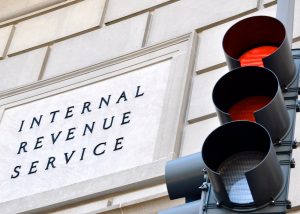 The Internal Revenue Service is urging taxpayers to do a “paycheck checkup.”
The Internal Revenue Service is urging taxpayers to do a “paycheck checkup.”
To help understand the implications of the Tax Cuts and Jobs Act, the IRS unveiled several new features to navigate the issues affecting withholding in their paychecks. The effort includes a new series of plain language Tax Tips which detail the importance of reviewing withholding as soon as possible.
The new tax law could affect how much tax you should have your employer withhold from your paycheck. To help with this, taxpayers can use the IRS’ Withholding Calculator. The Withholding Calculator can help prevent you from having too little or too much tax withheld from their paycheck. Having too little tax withheld can mean an unexpected tax bill or potentially a penalty at tax time next year. With the average refund topping $2,800, some taxpayers might prefer less tax withheld up front and receive more in their paychecks.
Individuals can use the Withholding Calculator to estimate their 2018 income tax. The Withholding Calculator compares that estimate to your current tax withholding and can help you decide if you need to change your withholding with your employer. When using the calculator, it’s helpful to have a completed 2017 tax return available.
Those who need to adjust their withholding must submit a new Form W-4 to their employer. If you need to adjust your withholding, doing so as quickly as possible means there’s more time for tax withholding to take place evenly during the rest of the year. If you wait until later in the year, it could have a bigger impact on each paycheck and your 2018 return.
The Tax Cuts and Jobs Act increased the standard deduction, removed personal exemptions, increased the child tax credit, limited or discontinued certain deductions, and changed the tax rates and brackets. Those who should especially check their withholding are:
- Two-income families
- People working two or more jobs or who only work for part of the year
- People with children who claim credits such as the Child Tax Credit
- People with older dependents, including children age 17 or older
- People who itemized deductions in 2017
- People with high incomes and more complex tax returns
- People with large tax refunds or large tax bills for 2017
We’ve got your back
At KRS, we’re working to help our clients understand and navigate these tax law changes. We strongly encourage all taxpayers to do a paycheck checkup to ensure they’re having the right amount of tax withheld for their unique personal situation. Contact managing partner Maria Rollins at mrollins@krscpas.com or 201.655.7411 for a complimentary initial consultation.

 The Internal Revenue Service is urging taxpayers to do a “paycheck checkup.”
The Internal Revenue Service is urging taxpayers to do a “paycheck checkup.” For taxable years beginning after December 31, 2017 and before January 1, 2026, non-corporate taxpayers (individuals, trusts, and estates) may take a deduction equal to 20 percent of Qualified Business Income (QBI) from partnerships, S corporations, and sole proprietorships.
For taxable years beginning after December 31, 2017 and before January 1, 2026, non-corporate taxpayers (individuals, trusts, and estates) may take a deduction equal to 20 percent of Qualified Business Income (QBI) from partnerships, S corporations, and sole proprietorships.
 Basic Rules for Individuals
Basic Rules for Individuals
